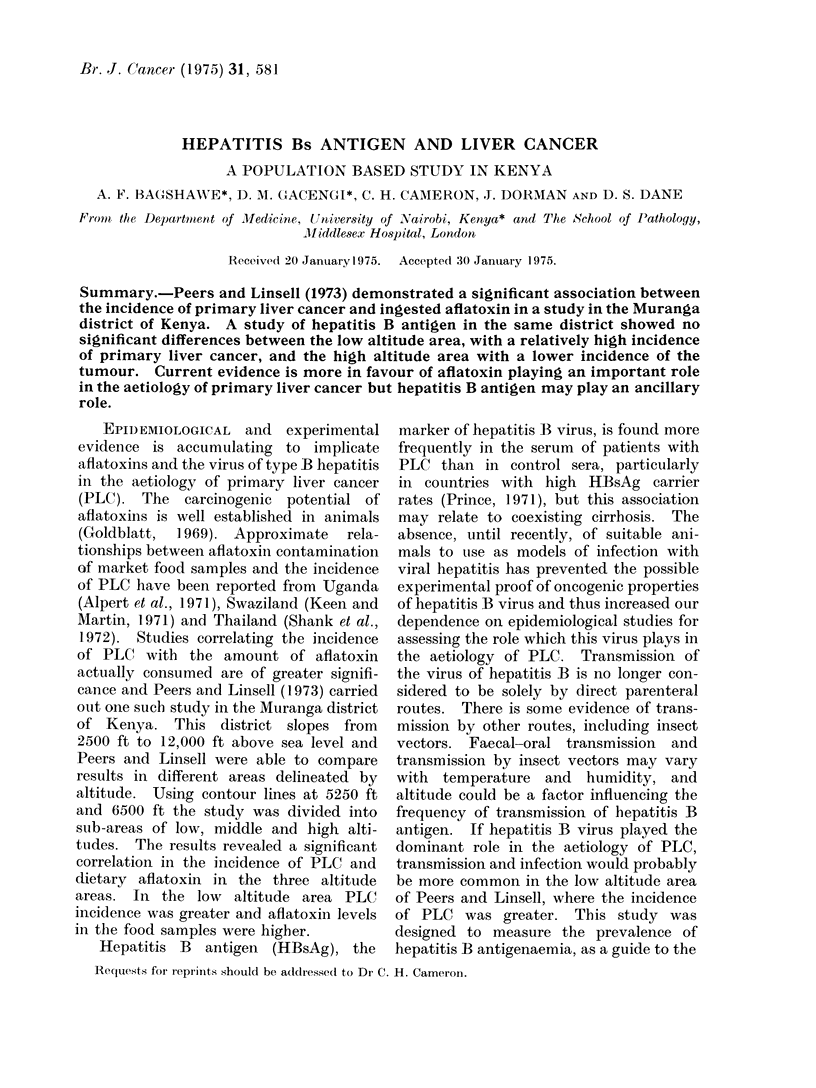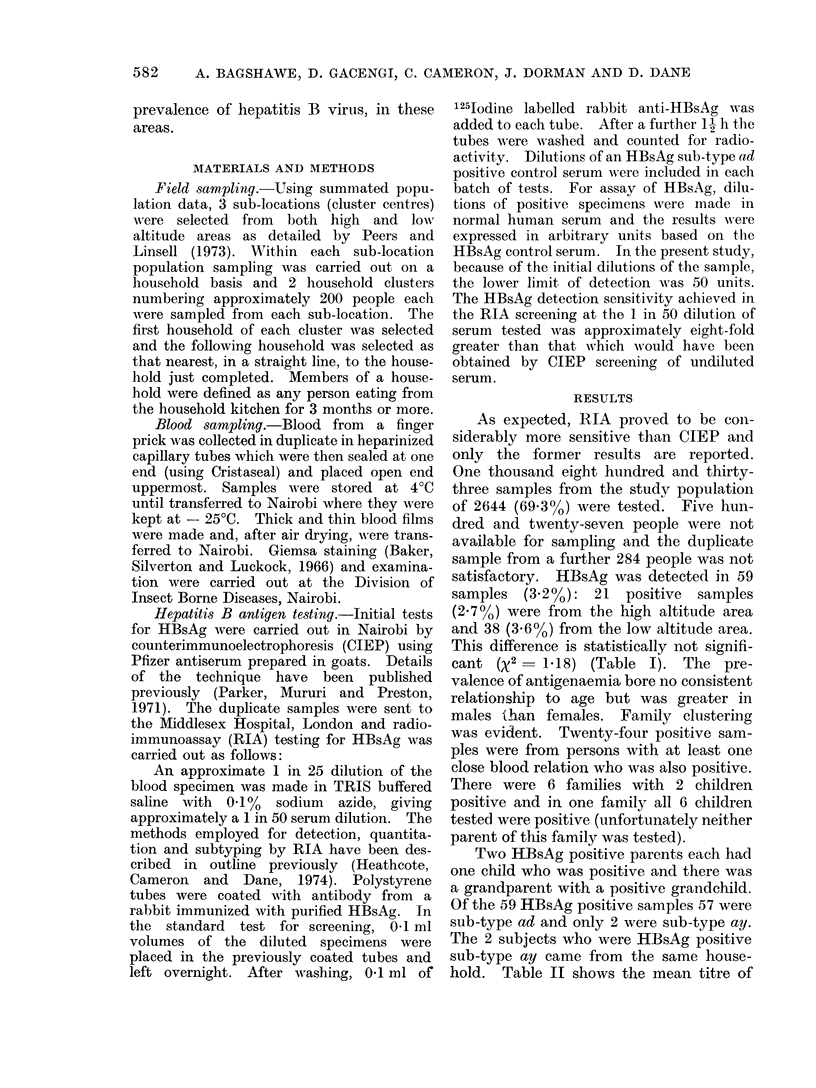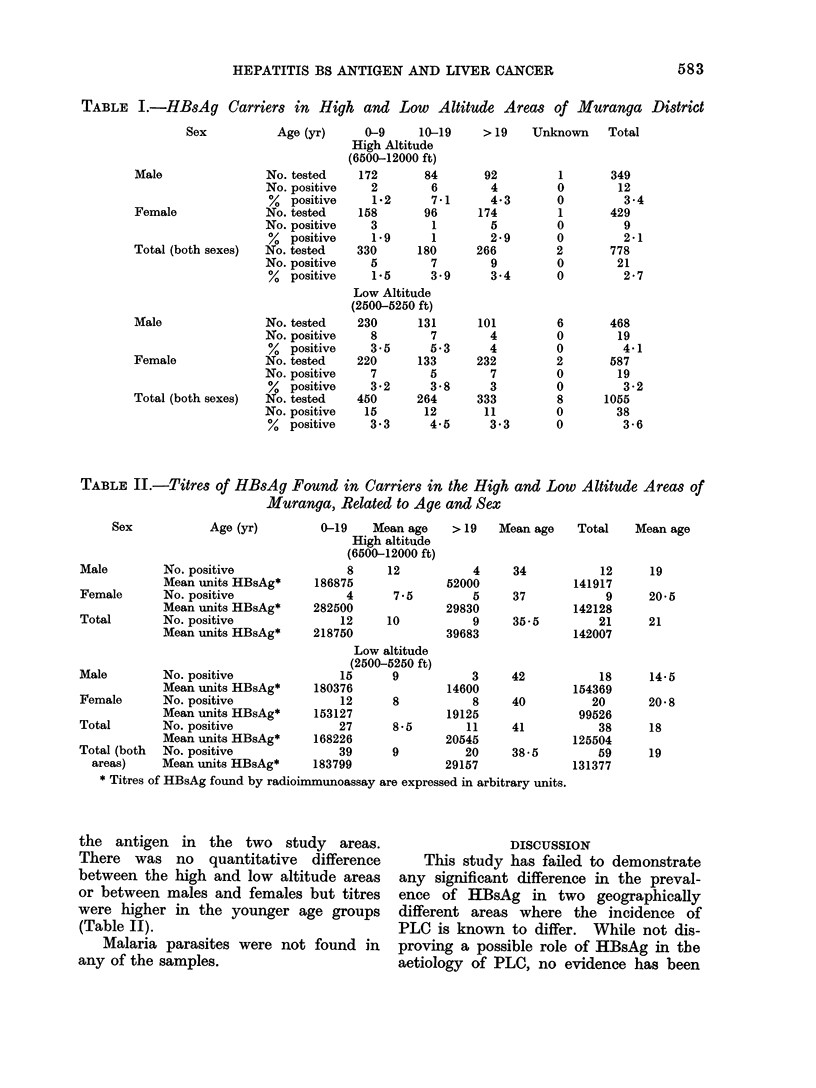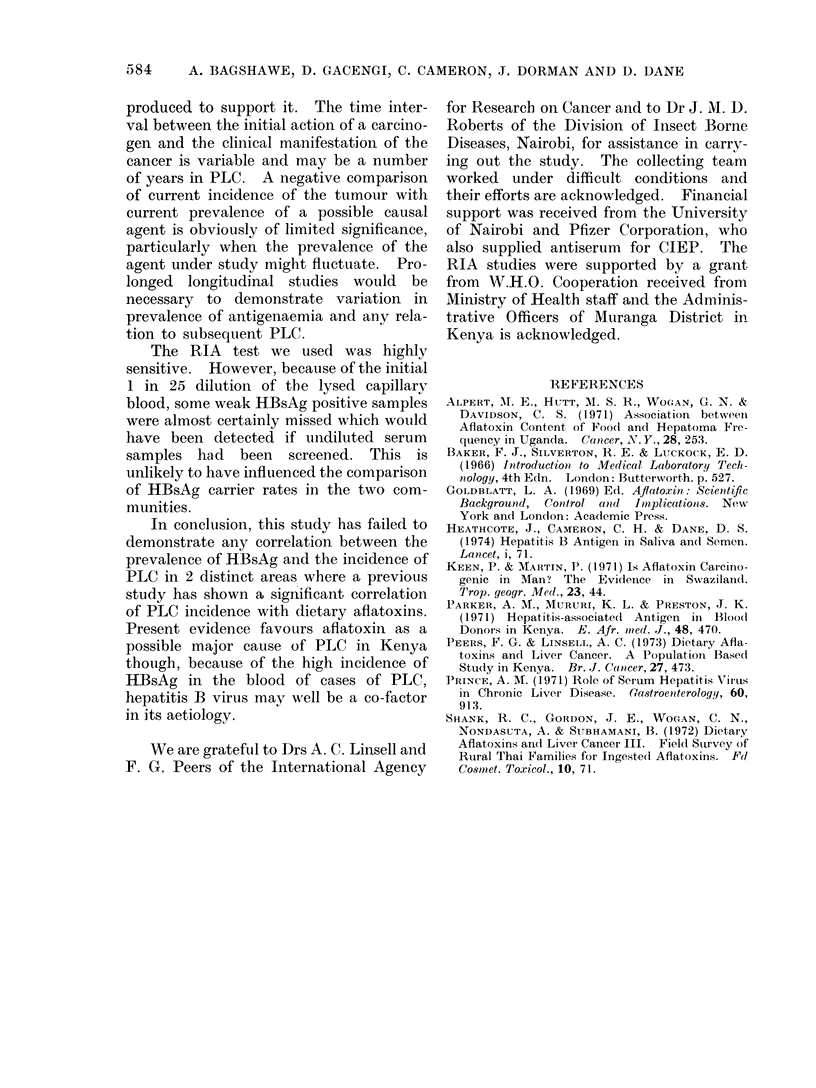Abstract
Peers and Linsell (1973) demonstrated a significant association between the incidence of primary liver cancer and ingested aflatoxin in a study in the Muranga district of Kenya. A study of hepatitis B antigen in the same district showed no significant differences between the low altitude area, with a relatively high incidence of primary liver cancer, and the high altitude area with a lower incidence of the tumour. Current evidence is more in favour of aflatoxin playing an important role in the aetiology of primary liver cancer but hepatitis B antigen may play an ancillary role.
Full text
PDF



Selected References
These references are in PubMed. This may not be the complete list of references from this article.
- Keen P., Martin P. Is aflatoxin carcinogenic in man? The evidence in Swaziland. Trop Geogr Med. 1971 Mar;23(1):44–53. [PubMed] [Google Scholar]
- Parker A. M., Muiruri K. L., Preston J. K. Hepatitis-associated antigen in blood donors in Kenya. East Afr Med J. 1971 Sep;48(9):470–475. [PubMed] [Google Scholar]
- Peers F. G., Linsell C. A. Dietary aflatoxins and liver cancer--a population based study in Kenya. Br J Cancer. 1973 Jun;27(6):473–484. doi: 10.1038/bjc.1973.60. [DOI] [PMC free article] [PubMed] [Google Scholar]
- Prince A. M. Role of serum hepatitis virus in chronic liver disease. Gastroenterology. 1971 May;60(5):913–921. [PubMed] [Google Scholar]


